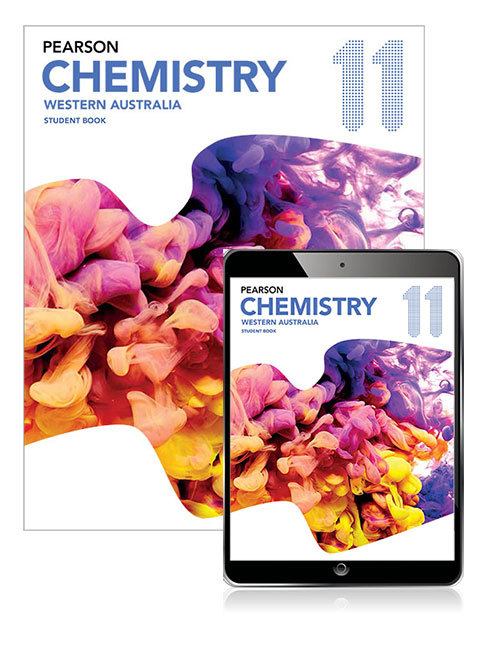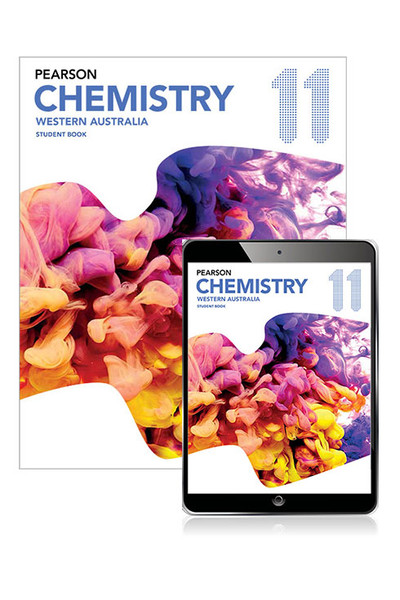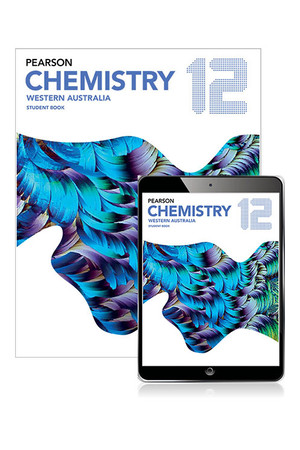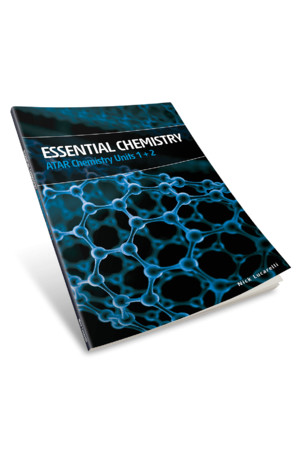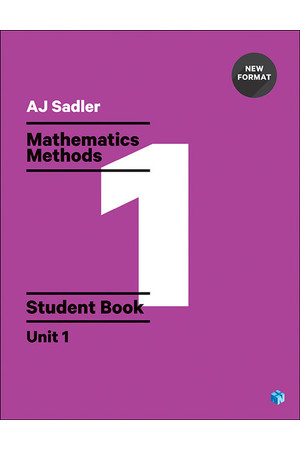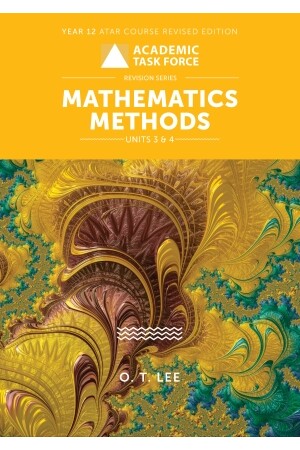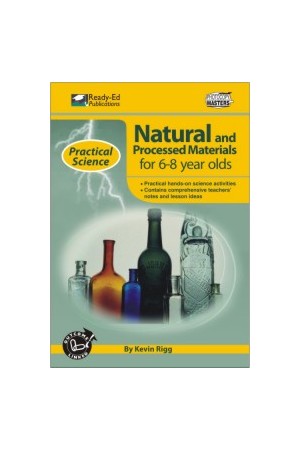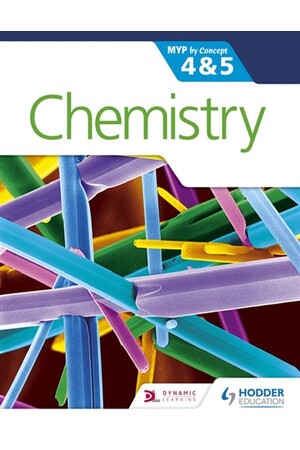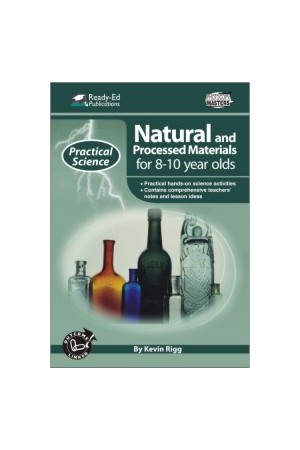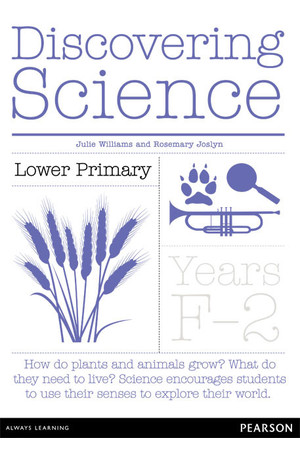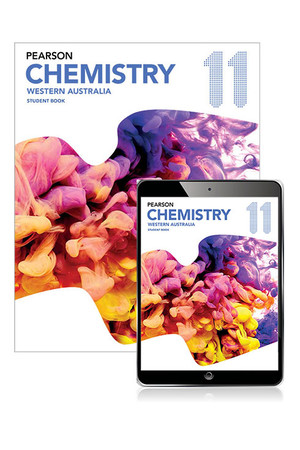Part of the series Pearson Science - Western Australia.
View all products in this series
Developed by highly-experienced, expert author teams, Pearson Chemistry 11 - Western Australia is written in alignment with the Western Australian Chemistry Syllabus. Each Student Book comes with Reader+, the next generation eBook.
- Chapter opening page links the syllabus to the chapter content. Science Understanding and Science as a Human Endeavour addressed in the chapter is clearly listed
- Chemistry in Action boxes place chemistry in an applied situation or relevant context and encourage students to think about the applications, consequences and issues raised by chemistry in the real world. Worked Examples scaffold problems and guide students through solving them. Each worked example is followed by a Try Yourself. This allows students to immediately test their understanding
- Highlight boxes focus students’ attention on important information such as key definitions, formulae and summary points
- Each section includes a summary to assist students consolidate key points and concepts. Each section finishes with questions to test students’ understanding and ability to recall the section’s key concepts
- Each chapter finishes with a set of higher order questions to test students’ ability to apply the knowledge gained from the chapter
- Each unit finishes with a comprehensive set of exam-style questions that assist students draw together their knowledge and understanding and apply it to this style of questions
Reader+ features:
Reader+ gives you access to the eBook version of your Student Book as well as bonus multimedia assets. It’s built to work both online and offline, making content easily available anytime, anywhere, in every school. Learners can quickly navigate through their ebooks, read them, take notes and save bookmarks.
Contents:
Part 1: Materials in Our World
- 1.1 Materials science
- 1.2 Nanomaterials
- 1.3 Purifying materials
Part 2: Atoms - Structure and Mass
- 2.1 Atomic theory
- 2.2 Describing atoms
- 2.3 Isotopes
- 2.4 Mass spectrometry
Part 3: Electrons and the Periodic Table
- 3.1 Electronic structure of atoms
- 3.2 Electron arrangement in the periodic table
- 3.3 Trends in the periodic table
- 3.4 Quantisation of energy
Part 4: Metals
- 4.1 Properties of metals
- 4.2 Metallic bonding
- 4.3 Reactivity of metals
- 4.4 Modifying metals
Part 5: Ionic Compounds
- 5.1 Properties and structures of ionic compounds
- 5.2 Using the ionic bonding model to explain properties
- 5.3 Formation of ionic compounds
- 5.4 Chemical formulas of simple organic compounds
- 5.5 Writing formulas of more complex organic compounds
Part 6: Covalent Compounds
- 6.1 Properties of non- metallic substances
- 6.2 Covalent bonding
Part 7: Carbon
- 7.1 Carbon lattices
- 7.2 Carbon nanomaterials
Part 8: Organic Compounds
- 8.1 Alkanes
- 8.2 Alkenes
- 8.3 Benzene
- 8.4 Reactions of hydrocarbons
Part 9: The Mole
- 9.1 Masses of particles
- 9.2 Introducing the mole
- 9.3 Molar mass
- 9.4 Percentage composition
Part 10: Energy Changes in Chemical Reactions
- 10.1 Exothermic and endothermic reactions
- 10.2 Thermochemical equations, energy profile diagrams and enthalpy
Part 11: Fuels and Stoichiometry
- 11.1 Types of fuels
- 11.2 Combustion reactions
- 11.3 Calculations involving fuels
Part 12: Intermolecular Forces
- 12.1 Shapes of molecules
- 12.2 Properties of covalent molecular substances
- 12.3 Types of intermolecular forces
Part 13: Chromatography
- 13.1 Principles of chromatography
- 13.2 Advanced applications of chromatography
Part 14: Gases
- 14.1 Introducing gases
- 14.2 The gas laws
- 14.3 Calculations involving reactions with gases
Part 15: Properties and Uses of Water
- 15.1 Essential water
- 15.2 Properties of water
- 15.3 Water as a solvent
- 15.4 Water as a solvent of molecular substances
- 15.5 Water as a solvent of ionic compounds
- 15.6 Factors influencing solubility in water
Part 16: Aqueous Solutions
- 16.1 Water as a solvent
- 16.2 Precipitation reactions
- 16.3 Solubility
- 16.4 Crystallisation
- 16.5 Concentration of solutions
- 16.6 Molar concentrations
- 16.7 Dilution
- 16.8 Calculations involving reactions in solutions
Part 17: Acids and Bases
- 17.1 Introduction to acids and bases
- 17.2 Calculating pH
- 17.3 The Arrhenius theory of acids and bases
- 17.4 Reactions involving acids and bases
- 17.5 Calculations involving acids and bases
Part 18: Rates of Reactions
- 18.1 Investigating the rate of chemical reactions
- 18.2 Collision theory
- 18.3 Applying collision theory
Part 19: Catalysts
- 19.1 Catalysts
Part 20: Practical Investigations
| ISBN | 9781488617720 |
| Publisher | Pearson |
| Product Type | Student Books, |
| Year Level | Year 11, |
| Author(s) | Geoff Quinton, John Clarke, Allan Knight, Phil Jones, Erin Brun, Marguerite Van der Klashorst, Simon Carrello, Penny Commons, Chris Commons, Claire Molinari, Bill Offer |
Be The First To Review This Product!
Help other Teacher Superstore users shop smarter by writing reviews for products you have purchased.


